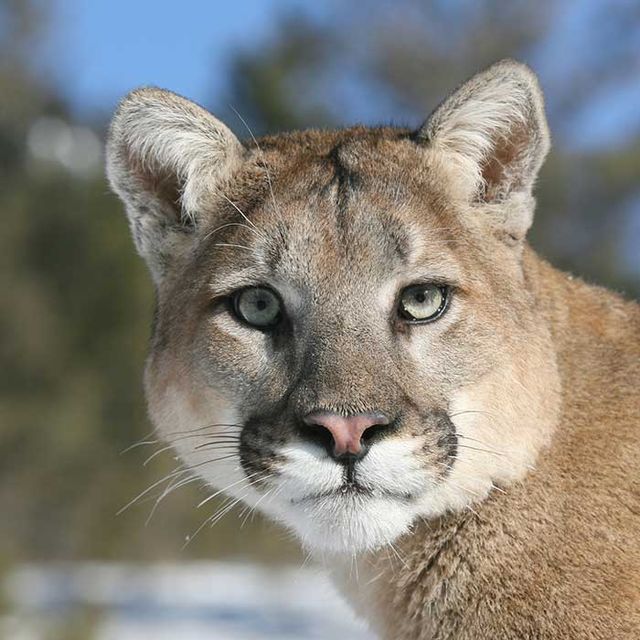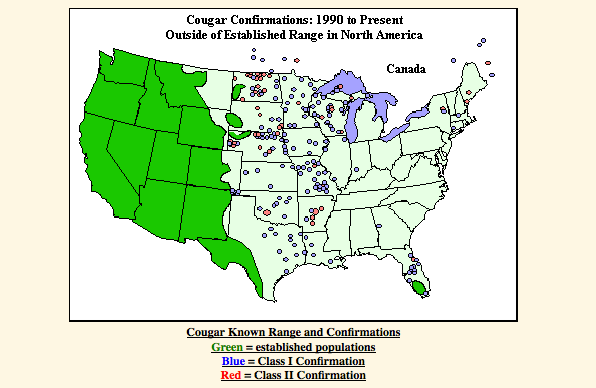
Cougar. Photo:
Cougars are on the rise in the Midwest. From 1990 to 2008, the number of sightings confirmed by wildlife professionals increased. That's good news for fans of big cats, which were extirpated from most of that area around 1900. In a recent issue of the , of the University of Minnesota documented sightings by state, courtesy of data collected from . (While counting, she and her team left out numbers from two areas where cougars have established populations: the Black Hills of South Dakota and the Badlands of North Dakota post-2006.) We contacted LaRue to learn a bit more about her study, “.” She let us know that since 2008, the numbers have continued to increase. Here's a breakdown of the rise of mountain lions in the Midwest, by the numbers.
178: Total cougar sighting confirmations in 14 states and provinces in midwestern North America between 1990 and and 2008, using data only verified by qualified wildlife professionals.
76: Percent of all confirmed cases that were males.
3: Number of known breeding populations that now exist in the Midwest: In the Black Hills of South Dakota, in the North Dakota Badlands, and in western Nebraska.
1,800: Miles a male cougar traveled from the Black Hills through Minnesota, Wisconsin, and New York before being on the Wilbur Cross Parkway in Milford, Connecticut, in 2011. “Honestly, I'm not really sure what to think of an animal traveling that far,” says LaRue. “But what it does tell us is that cougars are capable of traveling farther distances than we ever knew.”
684: Miles a male mountain lion traveled from the Black Hills to Oklahoma, the previous long distance record.
67: Number of cougars seen in Nebraska, the state with the most new sightings in the survey
1: Number of cougars seen in each of these three places: Kansas, Michigan, and Ontario

Map of Cougar sightings. Photo:
8: Percent of land in the Midwest that makes for suitable cougar habitat. The Midwest, according to the study, includes North Dakota, South Dakota, Minnesota, Wisconsin, Michigan, Illinois, Iowa, Nebraska, Kansas, Missouri, Arkansas, Louisiana, Texas, and Oklahoma.
79: Percent of confirmations that occurred within roughly 30 miles of suitable habitat: forested area with steep terrain and few roads or people.
0: The number of cougars the average person is likely to see in the wild in their lifetime. “Really, one of the most important things I like to make sure people know is that it's very unlikely that they will ever see or encounter a cougar,” says LaRue. “It's slightly more likely than winning the lottery; your chances aren't that great. But with that said, always be aware of your surroundings, especially in the wilderness.”
2: The number of online provided free from the , just in case you do run across a mountain lion in the wild.
—Joe Spring